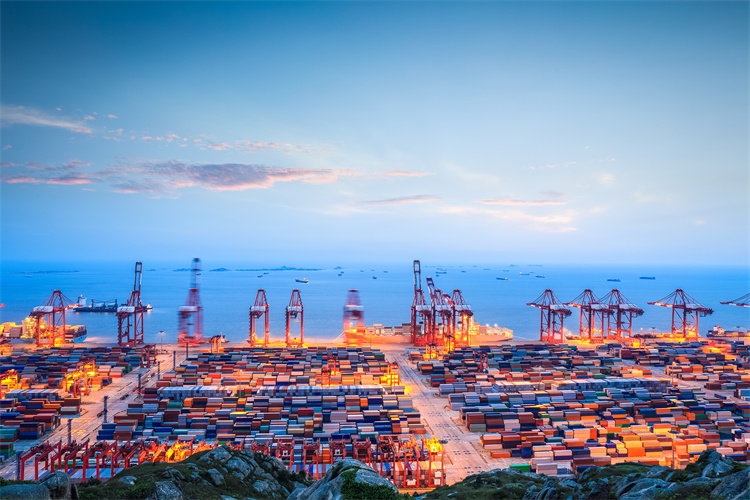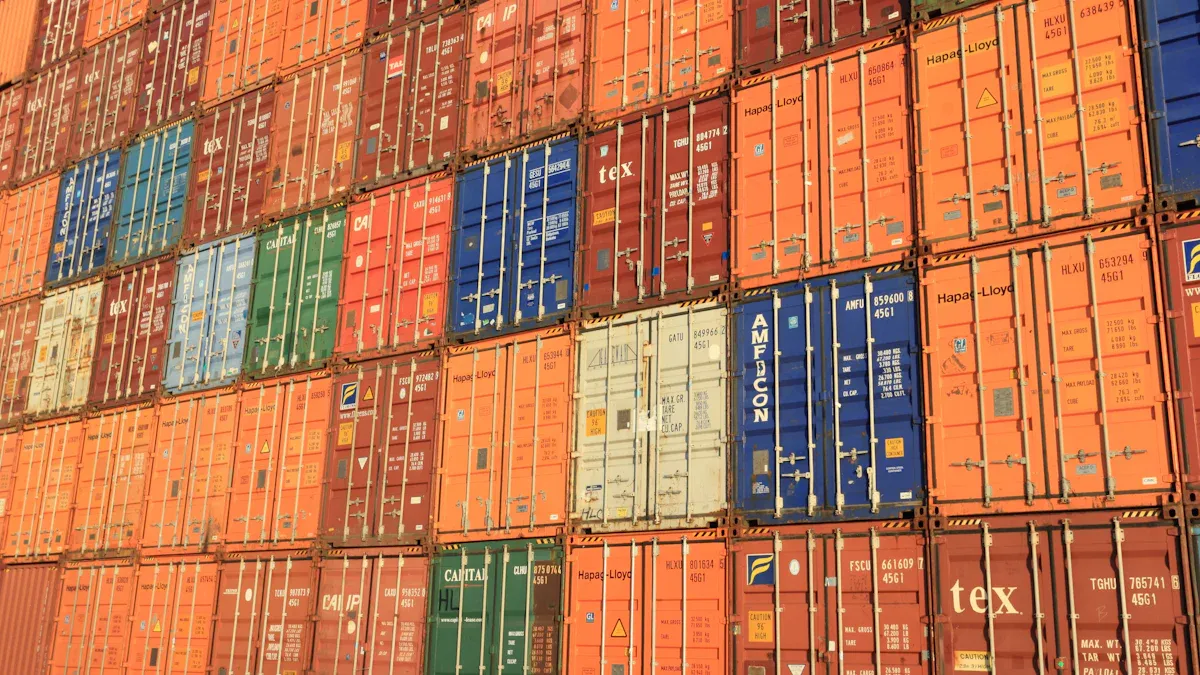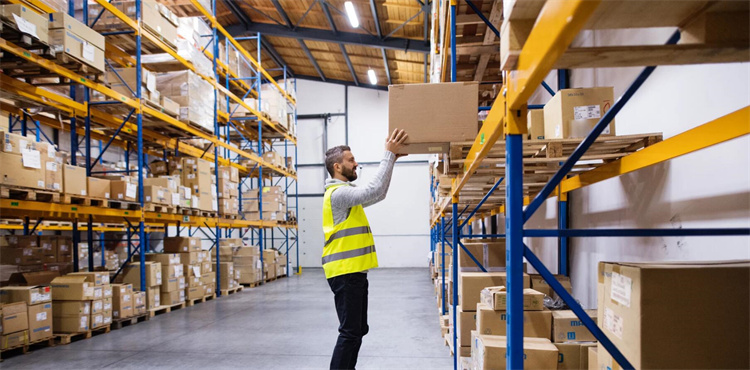What Makes Tariffs Significant for Domestic Industries

Tariffs hold significant importance in the economy by supporting local industries and reducing foreign competition. For instance:
A 2019 study revealed that U.S. tariffs on washing machines led to a 12% increase in foreign brand prices.
Local production saw a boost, creating 1,800 jobs, but consumers ended up paying $1.5 billion more.
While these regulations can safeguard industries, they may also lead to higher prices and negatively affect the economy.
A Tax Foundation study on the 2002 steel tariffs indicated that elevated prices resulted in decreased consumer purchases and job losses in related sectors.
The significance of tariffs lies in their ability to protect local businesses, but they can also have widespread effects on the overall economy.
Key Takeaways
Tariffs help local businesses by making imported goods cost more. This makes local products more attractive to buyers.
Tariffs can create jobs and increase local production. But they might also make things more expensive and cause job losses in other areas.
Knowing about different tariffs helps governments meet economic goals. They try to protect local businesses while keeping trade fair.
Understanding the Importance of Tariffs
What Are Tariffs?
Tariffs are taxes on goods crossing country borders. They help protect local businesses, raise money, and control trade. Think of tariffs as a way to change import or export costs to affect the economy. For example, tariffs make imported goods pricier, so people buy more local products.
Governments use different types of tariffs for specific goals. Ad valorem tariffs are based on a percentage of the item's value. Specific duties charge a set fee for each unit of goods. Compound duties mix these two methods to meet trade needs. These types let governments adjust tariffs to fit their plans.
How Do Tariffs Affect Global Trade?
Tariffs change how countries trade with each other. They make imported goods cost more, helping local products compete better. This protects industries important to the economy. Customs duties give local goods a price advantage, making them more appealing to buyers.
Tariffs also bring money to governments, which can fund public projects. But they have downsides. High tariffs can lower trade, disrupt supply chains, and raise prices. In 2025, U.S. tariffs caused the highest global rates, shrinking trade volumes.
Mechanism | Effect on Trade Flows |
|---|---|
Customs Duties (Tariffs) | Make local goods cheaper than imports |
Revenue Generation | Help governments earn money |
WTO Commitments | Push countries to lower tariffs |
Experts say tariffs protect industries but can hurt the economy. High tariffs often cause inflation and raise prices, making it harder for people to buy things.
Types of Tariffs and Their Uses
Tariffs come in different forms, each with a purpose. Knowing these types shows how governments use them to meet goals. Below is a list of common tariff types:
Type of Tariff | What It Does |
|---|---|
Ad valorem tax | Charges based on item value |
Specific duty | Fixed fee per unit |
Compound duty | Mix of ad valorem and specific duties |
Import quota | Limits number of goods allowed |
Tariff-rate quota | Combines limits and fees |
Telecommunications tariff | Controls pricing for communication services |
Ad valorem tariffs adjust with item value, making taxes fairer. Specific duties set equal costs for similar goods. Compound duties mix both methods for complex trade needs.
Eco-tariffs balance costs like environmental damage. Import quotas limit goods entering a country. These tools manage trade while addressing issues like sustainability and market balance.
Why Tariffs Are Imposed by Governments
Protecting Local Industries and Jobs
Governments use tariffs to shield local industries from foreign competition. Tariffs raise the cost of imported goods, making local products more attractive. This helps businesses grow and keeps jobs in the country. For example, U.S. steel tariffs in 2018 created over 4,000 new jobs. These tariffs also led to building new steel plants, boosting the economy. But not all tariffs work the same way. A 2021 study found tariffs during the China trade war caused 245,000 job losses. This shows tariffs can help local industries but hurt sectors needing imports.
Boosting Local Production and Self-Sufficiency
Tariffs encourage businesses to make goods locally by raising import costs. Producing goods domestically becomes more profitable for companies. This reduces dependence on foreign suppliers and strengthens the economy. For instance, higher tariffs on farm imports can push farmers to grow more crops locally. This supports local producers and ensures a steady supply of goods. By promoting self-sufficiency, tariffs protect national interests and build a stronger economy.
Raising Money and Fixing Trade Problems
Tariffs bring money to governments by taxing imported goods. This money can pay for public projects like schools or roads. Tariffs also help fix trade problems by cutting down on imports. Fewer imports mean less money spent abroad, improving the trade balance. For example, tariffs on luxury goods can lower unnecessary imports and raise government funds. This helps stabilize the economy and keeps local industries competitive.
Advantages of Tariffs for Domestic Industries

Helping Local Businesses and Cutting Foreign Competition
Tariffs help local businesses succeed by raising import prices. This makes local products more attractive to buyers. For example, tariffs on imported clothes give local makers a chance to sell more. This boosts production and helps domestic industries grow.
Tariffs also protect small businesses from big foreign companies. Smaller businesses often can't compete with cheaper imports. Tariffs make the competition fairer, helping these businesses survive. This support encourages people to start and grow their own companies.
Tip: Tariffs not only help industries but also improve local communities.
Protecting Jobs in Important Industries
Tariffs save jobs by reducing competition from foreign goods. Without tariffs, local companies might struggle and lay off workers. By limiting cheaper imports, tariffs help businesses keep their employees.
For instance, U.S. steel tariffs saved thousands of jobs. They also created new work opportunities in the industry. This shows how tariffs can protect workers' incomes and job security.
Keeping jobs in key areas like farming and factories strengthens the economy. These industries are vital for the country’s long-term success.
Encouraging Growth and New Ideas in Industries
Tariffs push industries to grow and create new ideas. With less foreign competition, local companies can focus on improving. They can invent better products and use advanced technology.
For example, tariffs on electronics can inspire local companies to make better devices. This helps the country become a leader in technology. Better products also benefit customers.
Tariffs also reduce reliance on foreign goods, promoting self-sufficiency. This encourages businesses to explore new markets and grow stronger. Over time, this builds a more competitive and stable economy.
Potential Drawbacks of Tariffs
Higher Costs for Consumers and Businesses
Tariffs often make goods more expensive for everyone. When governments add tariffs, businesses raise prices to cover costs. This means you pay more for everyday items. For example, after tariffs on washing machines, prices went up by $86 per washer and $92 per dryer. This added over $1.5 billion to what consumers spent.
Study | Findings |
|---|---|
University of Chicago (April 2019) | Washing machine prices rose by $86, dryers by $92, adding $1.5 billion in costs. |
National Bureau of Economic Research (March 2019) | Tariffs increased prices for U.S. importers. |
USITC Report (May 2023) | Steel and aluminum tariffs raised U.S. prices. |
Businesses also struggle with higher costs. Imported materials become pricier, making production harder. For example, during the 2002 U.S. steel tariffs, industries using steel lost jobs due to rising costs. This shows how tariffs can hurt both buyers and companies.
Risks of Retaliatory Measures in Global Trade
Tariffs can lead to trade wars, where countries fight back with their own tariffs. This causes prices to rise and trade to drop. During the U.S.-China trade war, both nations taxed each other’s goods. This led to higher costs, inflation, and uncertainty. Retaliatory tariffs also hurt industries that sell goods abroad. For instance, American farmers sold fewer crops when China taxed U.S. agricultural products. These actions harm trade and hurt economies on both sides.
Limited Access to Foreign Goods and Technologies
Tariffs make foreign goods cost more, giving you fewer choices. For example, a 20% tariff on clothes and a 10% tariff on fabric helps local businesses. But it also means fewer foreign options in stores. Over time, this limits access to advanced tools and special products. Companies needing imported machines or parts may struggle to compete globally. While tariffs protect local industries, they can block valuable resources from other countries.
Real-World Examples of Tariffs in Action

Case Study: U.S. Steel and Aluminum Tariffs
In 2018, the U.S. added tariffs on steel and aluminum. These tariffs aimed to help local industries and reduce imports. While they saved some jobs, they raised costs for other sectors.
Aluminum tariffs added $2.2 billion to beverage industry costs.
Car companies like Ford paid $1 billion more, raising car prices by $700.
The tariffs helped metal production but hurt industries using metals. Price increases caused problems for businesses and consumers. A survey showed worries about a recession linked to these tariffs.
Agricultural Tariffs and Their Impact on Local Farmers
Farm tariffs protect farmers but can also cause problems. The Smoot-Hawley Tariff Act of 1930 led to global retaliation. U.S. farm exports dropped, and farmers struggled with low prices. During the Trump trade war, tariffs hurt markets for soybeans and pork. Farmers needed $23 billion in government aid to cover losses.
A study showed removing farm tariffs could boost global trade by 11%. But tariffs on fertilizers and machines raised costs for farmers, making things harder.
Lessons from Historical Tariff Policies
Old tariff policies teach important lessons. The Smoot-Hawley Act worsened the Great Depression by cutting global trade. The U.S.-China trade war caused stock drops and recession fears. These examples show the need for smart tariff policies.
Investing in technology and diversifying industries can reduce risks. Policymakers must balance protecting local industries with keeping the economy stable.
JUSDA’s Role in Navigating Tariffs and Global Trade
How JUSDA Helps Local Industries with Supply Chain Solutions
JUSDA offers strong supply chain tools to help local industries grow. Their advanced digital systems include smart inventory tracking and real-time updates. These tools give you better control, lower risks, and improve efficiency.
JUSDA’s global network ensures smooth logistics. They have over 155 distribution centers and 2.5 million square meters of warehouse space. They handle large shipments efficiently, with sea freight over 300,000 TEUs and air freight reaching 150,000 tons. This system supports industries like electronics, cars, and consumer goods, ensuring fast delivery and lower costs.
Metric | Value |
|---|---|
Annual sea throughput | 300,000+ TEUs |
Annual rail turnover | 10,000+ TEUs |
Annual air volume | 150,000 tons |
Global distribution centers | 155+ |
Warehouse space | 2.5M+ sqm |
International routes | 2,000+ |
Coverage in core cities | 600+ |
JUSDA uses automation in warehouses to reduce mistakes and boost output. Their JusLink Smart Supply Chain Platform gives full visibility. This helps you make better decisions and adjust to market changes quickly.
Using JusTrade for Easy Customs Clearance During Tariff Issues
Dealing with tariffs and customs rules can be hard. JusTrade makes it easier with smart customs clearance services. It uses AI and big data to simplify processes and follow trade laws.
JusTrade offers tools like product categorization and bonded zone express services. These features cut delays and improve logistics. For example, their China-Vietnam cross-border solutions ensure smooth shipping in strict customs areas. With 500+ experts in nearly 20 countries, JusTrade manages over $100 billion in trade yearly. Their experience ensures your goods move smoothly, even with tough tariff rules.
Improving Trade Compliance and Cutting Costs with JusTrade
Following trade rules is key to avoiding fines and keeping operations smooth. JusTrade helps you stay compliant by connecting with your ERP systems. This gives real-time data for accurate customs filings and regulation checks.
The platform also saves money by automating tasks and reducing errors. It handles jobs like tax refunds and currency exchanges, saving time and effort. JusTrade manages complex customs work, so you can focus on growing your business while they handle global trade challenges.
Tip: Partnering with JUSDA and JusTrade helps you manage tariffs, cut costs, and improve your supply chain’s performance.

JUSDA Solutions
To provide you with professional solutions and quotations.
Tariffs help industries grow, save jobs, and support local businesses. But they can also cause problems like higher prices and trade issues. JUSDA and JusTrade make handling these problems easier. Their smart tools and expert help keep trade smooth and simple. They ensure you follow rules and stay competitive in the market. 🌟
See Also
The Importance of Supply Chains in Global Trade
Exploring How Global Trade Policies Affect Economies
Achieving Success in International Trade Through JUSDA
Maximizing Your Automotive Supply Chain's Full Potential
The Industry-Leading Advantages of JUSDA's Supply Chain Solutions
